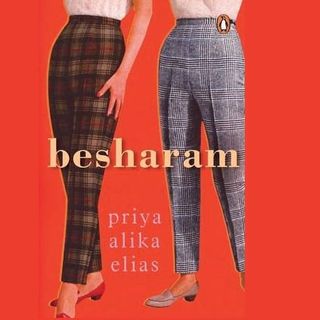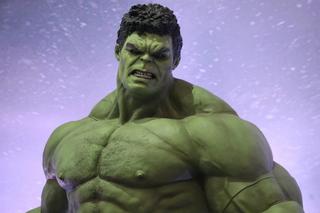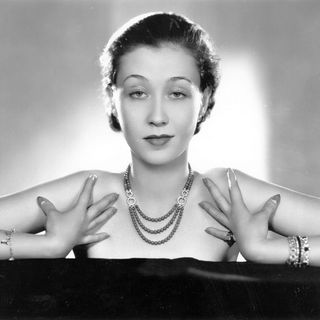
The Toxic Culture of Sci‑Fi and Its Fanboys
Fantasy and sci-fi have failed to educate their fanbase on what being inclusive really means.

While fantasy and sci-fi have garnered a reputation that centres narratives of ‘belonging,’ they have actually failed to educate a legion of its fanbase on what being inclusive really means. Instead, the fanboys and the films they love have thrived on exclusion and bullying other identities for decades. From the outrage and abuse against a female Doctor Who, the misogyny of Blade Runner and the toxicity of the Star Wars fandom, geek culture has always focused on hetero-normative fantasies. No matter how much women, queer, and non-binary folks (shout-out to Ezra Miller who’s challenging gender stereotypes on every red carpet) try and change things, the industry continues to cater to a cis, straight, and usually misogynistic audience.
Sci-fi and fantasy universes have consistently manufactured a world to fuel the normie, straight male’s rescuer ego. Which is why other gender identities getting their equal time in nerd culture has always been a sizeable problem for ‘fanboys’ — the same population that bullied Star Wars’ Kelly Marie Tran off the Internet, sued the all-women Wonder Woman screening, abused the all-female Ghostbusters, and would refuse to talk about the physics of Superman with a female fan. The male entitlement of fanboy culture is hardly news, but as the industry is expanding, it’s surprising how little it caters to anyone who isn’t male.
Films and the Male Gaze
An astounding number of women are actively part of the trillion-dollar sci-fi and fantasy media industry, from video game developers to writers and directors, and yet the nerd culture — which by the way is built on its fandom — has done very little to educate its base. A 2017 Forbes article titled “How Women Are Changing Geek Culture” gives us an idea about the prevalent glass ceiling and the gender wage gap in the tech, media and investment sectors. But much of nerd culture, even today, is predicated on the idea that women aren’t consumers. Instead, most films and TV shows continue to cater to a decidedly male gaze.
In her 1973 essay “Visual Pleasure and Narrative Cinema,” British film theorist Laura Mulvey addresses the “determining male gaze.” “In their traditional exhibitionist role, women are simultaneously looked at and displayed, with their appearance coded for strong visual and erotic impact so that they can be said to connote to-be-looked-at-ness,” writes Mulvey, who has argued that the medium of mainstream film is driven by a patriarchal subconscious.
Mulvey almost predicted the 2000s, which had no space for the nuances of womanhood. The trope of the overtly emotional, powerful-but-unstable neurotic femme accompanied any and (almost) every woman in sci-fi and fantasy, from Jean Grey to Catwoman. The mission to ‘tame’ the woman, who’s too gifted for her own good, has successfully churned out six X-Men movies.
Related on The Swaddle:
‘Masculinity Contest Culture’ in Science Disadvantages Women
Mulvey’s idea of looked-at-ness manifests in Scarlet Witch’s leotard, or Lara Croft’s fembot-ism, neither of which should be a problem — except, they were there to establish tropes of overwrought male fantasy. “Her (Lara’s) character model was relatively primitive, since 3D graphics were in their infancy at the time, but it was plainly obvious that she was designed as an adolescent male fantasy: chest twice as wide as her waist, teal tank top, khaki booty shorts,” Polygon editor Samit Sarkar tells Vox.
To make things worse, pop culture has time and again let its audiences down, by furthering the divide and keeping women and men far away in distinctly labelled boxes. Remember the time in The Big Bang Theory when Leonard invited the girls to play Dungeons & Dragons with the guys?
Sheldon: But I have never played Dungeons & Dragons with girls before.
Penny: Oh, don’t worry sweetie. No one has.
There may be hundreds of thousands of women who enjoy D&D, but when an 11-year-old boy from Bengaluru, or Boston, watches the show, he instinctively internalizes this divide.
Fanboys and the Repercussions
I was recently asked to make my case for a negative review I had once written for Thor: Ragnarok. This was followed by the obvious, “Why watch a superhero film, then?” “Who’s your favorite superhero?” “What’s your favorite film?” As you can imagine, the questions were directed at me as a means to drive home the point that I just don’t have enough cred to review a comic book film to begin with.
Let me be clear: The person — the man — on the other side of the table had no interest in what I really thought about the movie, or what propelled me to write that review. There is a gender gap I intensely felt, a dynamic of condescension, which the male fandom so often relies on to dismiss the ‘other’ perspective. Their unabashed love for Star Wars, or Dungeons& Dragons, shields them from being held accountable for their un-evolved stance. Their nerd-dom becomes their alibi; and an excuse to say, or do, things that would otherwise be unacceptable.
Remember the ‘Cosplay is not Consent’ sign that went viral at the 2014 New York Comic Con? A 2016 ScoopWhoop article chronicles how sexual harassment at Indian Comic Cons goes unchecked. These are reminders of what women in nerd culture are up against. In fact, as all other identities try to navigate a toxic and parochial world manipulated by creators like Brett Ratner, who have exclusively catered to hetero fantasy, and normalized sexual violence (like in Batman: The Killing Joke), the fanboys get a well-ordered clean chit and cosplay porn. The side-lining of women and other identities has fostered and allowed rape culture in science fiction, and has meant that the ubiquitous sexism in the genre is often overlooked.
Related on The Swaddle:
Gender Stereotypes Change Slowly, But They Can Change
Let’s be clear, this is not on women; they have enough to deal with until climate change does away with us all. Women know how to express opinions and the last thing they need is male validation on their well-founded perspectives. But while 2019 looks like an exceptional year for women in movies, statistically speaking, Captain Marvel, Wonder Woman and Jean Grey can’t shift the dialogue alone.
When April commences, and Jon Snow and Tony Stark get ready to take flight, or a dragon, most women across the country need to prepare themselves for a deluge of male voice(s) talking over them, scrolling past their Facebook posts about Marvel Universe loopholes, or being ambushed with, “Have you read the comic book, though?” And if you did, in fact read it, it would make zero-to-little difference as to how the female voice is processed. (That being said, there is no prerequisite to just liking a movie, and no reading list involved. Anyone who tells you otherwise is a bully.)
Every time a woman is made to feel disenfranchised as a fan, or even as a critic, it is a step backwards. So, this year, I’m calling out the mansplainers on their BS, not making my peace with the majority privilege of the fanboy community, putting a stop to gate-keepers and bullies, and actively seeking out more female, queer, trans and non-binary sci-fi and fantasy reads. I can’t and won’t sugar-coat the ordeal, as nothing changes overnight. Everything starts somewhere and as the mother of sci-fi, Mary Shelley, taught us, “The beginning is always today.”
Ujjainee Roy is a culture writer and has had enough of the five-day work week. You can find her work if you want to, you know.
Related


The Buzz Cut: The Mystery of the Chanel Model‑Turned‑WWII Spy
